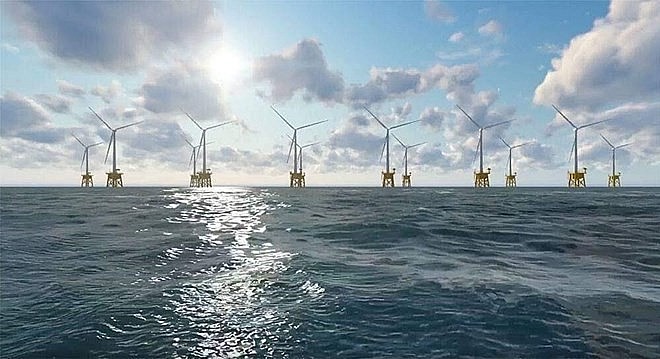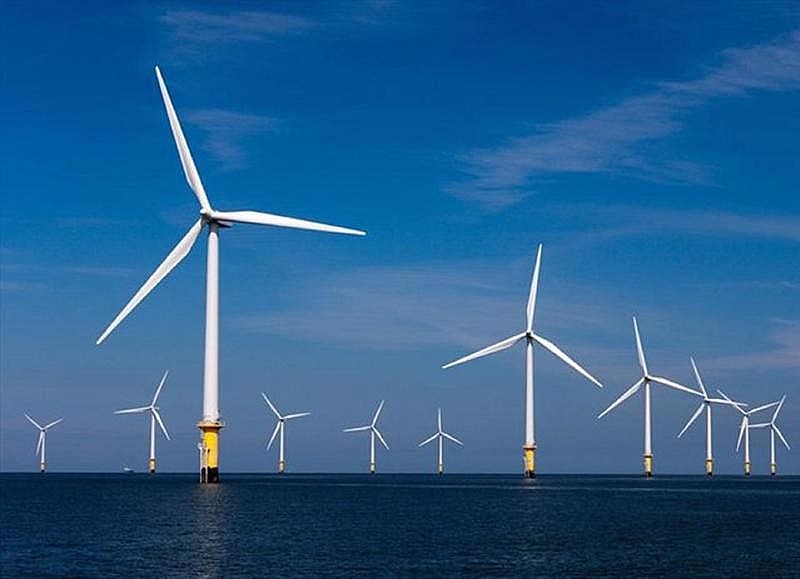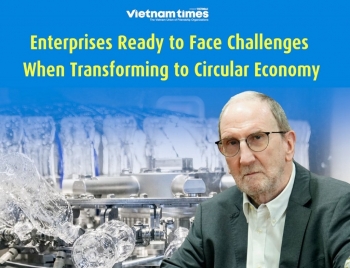Turning Vietnam Into Research Center in Green Transition
 |
| Incorporating offshore wind power projects into green hydrogen production helps reduce the investment burden of the domestic power system. Photo: EVN |
Opportunities for startups in green hydrogen production
In the context of a global shift towards clean energy sources, hydrogen is emerging as an alternative to fossil fuels.
According to McKinsey, the hydrogen economy could support global revenues of more than US$2.5 trillion per year by 2050, creating jobs for more than 30 million people, and helping avoid 6 billion tons of CO2 emissions.
The International Energy Agency (IEA) predicts the hydrogen market could be worth more than US$1,400 billion per year by 2050. Developing and emerging economies will hold more than 65% of this market.
Vietnam is also not outside that green transformation race. Recently, the Ministry of Industry and Trade issued a document requesting the Government to approve the strategy on hydrogen energy production until 2030, with a vision to 2050.
At the Green Economy Forum 2023 recently held in Hanoi, European businesses said they would consider increasing investment and establishing research centers in Vietnam in the fields of renewable energy, especially green hydrogen.
This contributes to making Vietnam a regional research center in the field of green transition and forming a green hydrogen value chain in Vietnam.
Nguyen Anh Duc, director of the Vietnam Petroleum Institute, said that currently our country is mainly gray hydrogen.
Planning the growth direction of green hydrogen in the future will be a challenge, but also a great opportunity, especially for startups because Vietnam has advantages in renewable energy, offshore wind power, and solar power.
"Innovative solutions need to be promoted, not only in green hydrogen production but also in transportation.
We need to provide startups with full information about how the world's technology revolution is going, what we can learn from foreign startups, and how to apply it to Vietnam," Duc said.
 |
| Photo: vneconomy |
Unlimited offshore power source for green hydrogen production
According to Pham Nguyen Hung, deputy director of the Electricity and Renewable Energy Department, the plan is to produce 100,000-500,000 tons of hydrogen by 2030 and increase to 10-20 million tons by 2050.
This is a broad target solution and requires clean input energy for production.
Hung said, "Green hydrogen production must originate from clean electricity, that is, from renewable energy.
In National Power Development Plan VIII, the power source for green hydrogen production has unlimited capacity on the basis of ensuring national security and defense, economic efficiency, and ensuring it becomes a new economic sector of the country.
In that context, Vietnam's offshore wind power has huge and unlimited potential. Therefore, if any business seizes the opportunity, after marine spatial planning, it can propose to use offshore wind power projects to produce green hygrogen."
Hung said that if electricity from the grid is used in production, it will be difficult to prove whether this hydrogen source is truly green, produced from a clean energy source or not.
Reducing the cost of producing green hydrogen requires connecting to the power grid, then it will not be called green. If Vietnam uses renewable energy independent of the grid, there will be no restrictions.
 | Enterprises Ready to Face Challenges When Transforming to Circular Economy The transformation to a circular economy is a major development trend in many countries throughout the world, including Vietnam, with several environmental, economic, and social ... |
 | Vietnam And Egypt Exchange Experiences in Attracting Green Finance Vietnamese Ambassador to Egypt Nguyen Huy Dung said that to implement and fulfill commitments, it is important that Vietnam and Egypt take advantage of climate ... |
 | Denmark Supports Vietnam in Green Transition The Green Strategic Partnership (GSP) between Vietnam and Denmark will support the realization of the two countries' efforts to promote green transition and green growth. |
Recommended
 Viet's Home
Viet's Home
Lai Chau National Assembly, People's Council Delegates Hold Dialogue with Children
 Viet's Home
Viet's Home
24 Children with Disabilities in Northern Provinces Received Free Surgery
 Viet's Home
Viet's Home
World Vision Promotes Comprehensive Nutritional Care for Vietnamese Children
 Viet's Home
Viet's Home
Hanoi, South Africa Strengthens People-to-people Exchanges, Expands Multi-sector Cooperation
 Viet's Home
Viet's Home
Hue City to Raise Awareness on Mine Accident Prevention
 Focus
Focus
Vietnam Leaves Imprints on the World Peacekeeping Map
 Viet's Home
Viet's Home
“Global Vietnamese Singing 2025” - Connecting Hearts Longing for Homeland
 Viet's Home
Viet's Home


